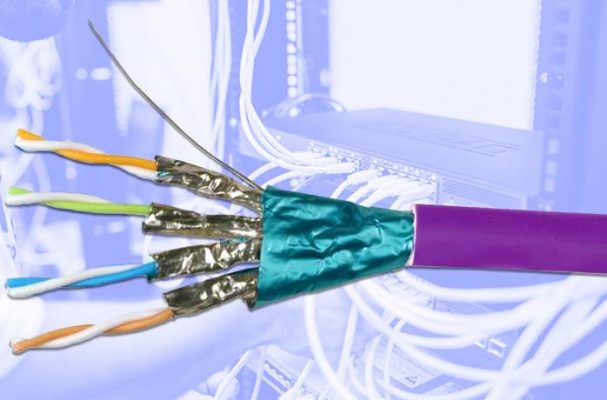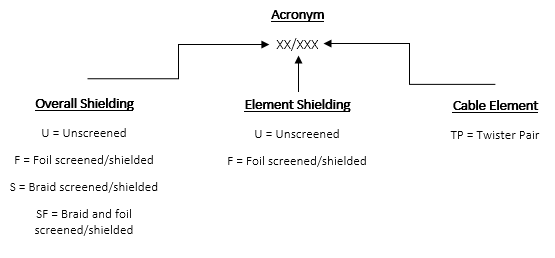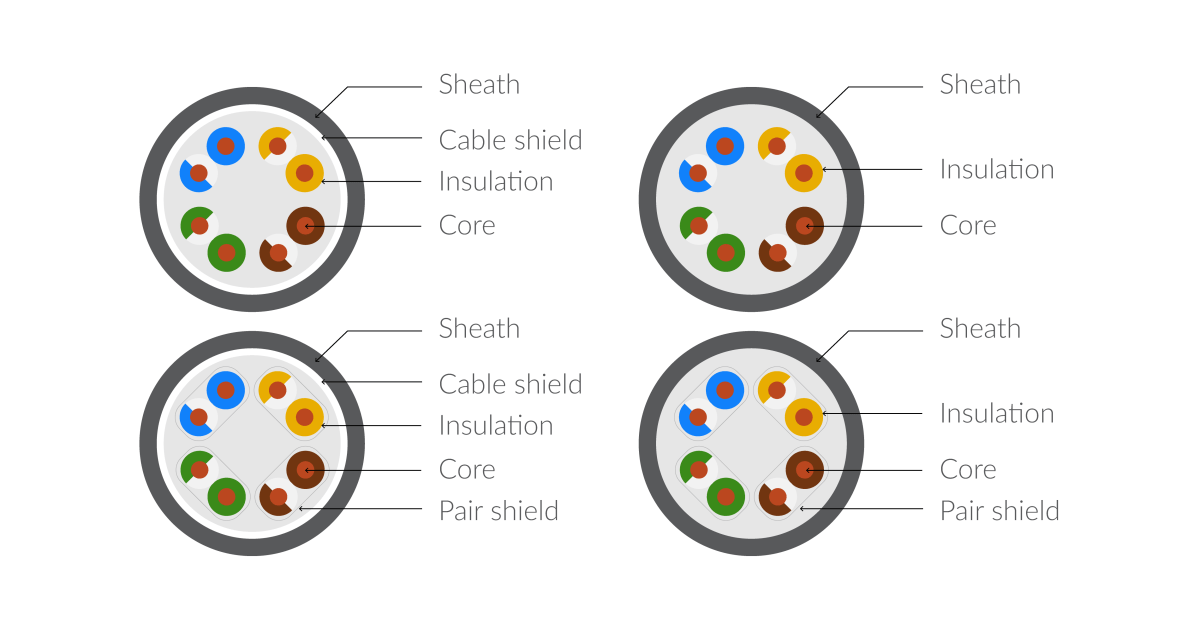- Key Points
- Learn the purpose of cable shielding
- Explore the different kinds of cable shielding
- Determine what shielding is present in a cable

What is the purpose of cable shielding?
Inside a cable, shielding is a covering that encloses one or more insulated wires. Shielding can be braided, foiled, or a combination of both. It can be wrapped around all four pairs of twisted pair cable, individual conductor pairs, or both the entire cable and individual pairs.
Why are there so many different types of cable shielding?
With copper cable, EMI (Electromagnetic Interference) can wreak havoc on data transmission, resulting in data errors that slow down the transmission speed (bit error rate) and possibly downtime. Manufacturers offer various levels of shielding on cables and connectors to eliminate EMI. The source of EMI can either be from external sources or from within the cable itself (crosstalk). The speed of signal transmission (measured in megabits Mb/s or gigabits per second Gb/s), source and nature of the EMI will determine the type and level of shielding. The option that you choose will be determined by the nature of your application.
How do I determine what shielding is present in a cable?
The letters before the slash in the product name usually refers to the shielding on the cable, while letters following the slash refer to the shielding on the individual pairs.

To help you decipher the cable shielding code, here’s a cheat sheet:
F/UTP – Foiled/Unshielded Twisted Pair: The four pairs of unshielded twisted pair are encased in an overall foil shield.
S/FTP – Shielded/Foiled Twisted Pair: Braided shield protection is underneath the jacket, and each pair is enclosed in its own foil shield. The added foil on the individual pairs serves to reduce crosstalk between them.
F/FTP – Foiled/Foiled Twisted Pair: A foil shield with twisted pairs that are foil screened. This cable, like F/UTP, is widely used in 10GBaseT applications.
U/FTP – Unshielded/Foiled Twisted Pair: With foil-shielded twisted pairs, but there is no general/overall shielding or braid. This cable is commonly used in 10GBaseT applications as well.
U/UTP (UTP) – Unshielded/Unshielded Twisted Pair: Pairs of wires that are twisted together and have no shielding at all. These cables are usually referred to as UTP and the twisted pair is one of the most fundamental methods for preventing electromagnetic interference.

How is the shielding connected in a structured cabling system?
The cable is only one component of the structured cabling system. There will usually be a connector (jack or module) at either end of the cable, connecting onto flexible patch leads and other connection points. It is important that the integrity of the shield is maintained from the signal source (network switch) through to the device (PC, Printer or IP camera). The screen will be electrically coupled to the metallic body of the connectors. At the switch end, it is usual for the connector to be electrically grounded via the patch panel and rack. At the device end, the shield must not be grounded as this can result in circulating electrical currents which is detrimental to data networks.
For more information about the different types of cable that are available, contact our dedicated sales team by email at enquiries@networkscentre.com or phone us on 01403 754233.
- Related Links
- Copper Cable


